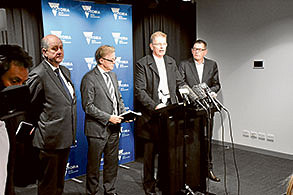
What to do next with cladding
More buildings with high-risk combustible cladding have been added to the list, as the government ponders what to do next.
Cladding Safety Victoria (CSV), the state agency tasked with administering the rectification of residential apartment buildings affected by high-risk combustible cladding, has admitted that there are nearly 50 per cent more buildings in the high-risk category than previously reported.
The statement made by CSV in October, as reported by the Australian Financial Review, confirmed that there are now 735 buildings in Victoria with high-risk combustible cladding in need of removal.
This is a large increase from the original estimate of 500 buildings that the Victorian Government estimated it would need to fix.
It has become increasingly clear to all involved in the industry that the government simply does not have the funds, nor the conviction to repair all of the affected buildings.
Best estimates would be that between 150 to 350 buildings could be rectified over the next 24 months before the CSV is slated to be wound down.
To prepare owners of buildings for the upcoming disappointment, the Victorian Parliament passed an amendment to the Building Act (known as the Building Amendment (Registration and Other Matters Act) 2021) that now provides owners’ corporations (OCs) with an enlarged time period of 15 years (from date of completion) to bring a legal claim against the builder or developer or other stakeholders for contributing to costs to remove the cladding.
As readers of this column would remember from previous articles, I have long been taking pot shots at the Owners’ Corporation Act reforms, because under those reforms, an OC will still be required to pass a special resolution or interim special resolution to bring a cladding action (if the cost of the cladding rectification will exceed $200,000).
Most buildings will encounter repair costs in the region of $500,000 to $5 million depending on the size of the building, and the extent of the presence of the cladding.
The net result of all of this toing and froing is that there will be a large number of dangerous buildings of an extreme fire risk classification that will remain unrepaired for a very long time.
There will also be a large number of buildings that will enter into very expensive remedial contracts to repair their buildings themselves, and the owners within those buildings will face massive costs and high annual fees.
There will also be a large number of buildings that will embark upon lengthy and costly litigation to hedge their bets against the high remedial costs, and these legal cases will take years to resolve.
All in all, it is a bonanza for lawyers, insurance firms, remedial builders, project managers and scaffold-hire companies. And this will be to the great detriment and frustration of all those Victorians who own or live in an affected apartment.
This will cost countless livelihoods and will place incredible strain on communities.
The government has a bigger role to play here, and they are failing.
The people of Victoria await the government’s response to this issue •

Revitalisation of Alexandra Gardens progresses

Build-to-rent development gets green light in South Melbourne





 Download the Latest Edition
Download the Latest Edition